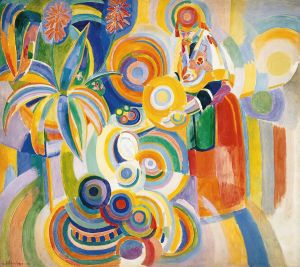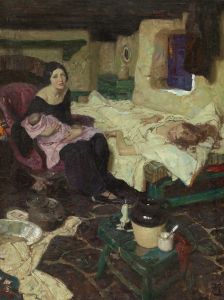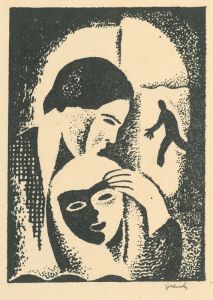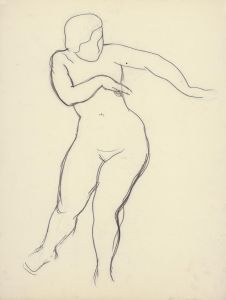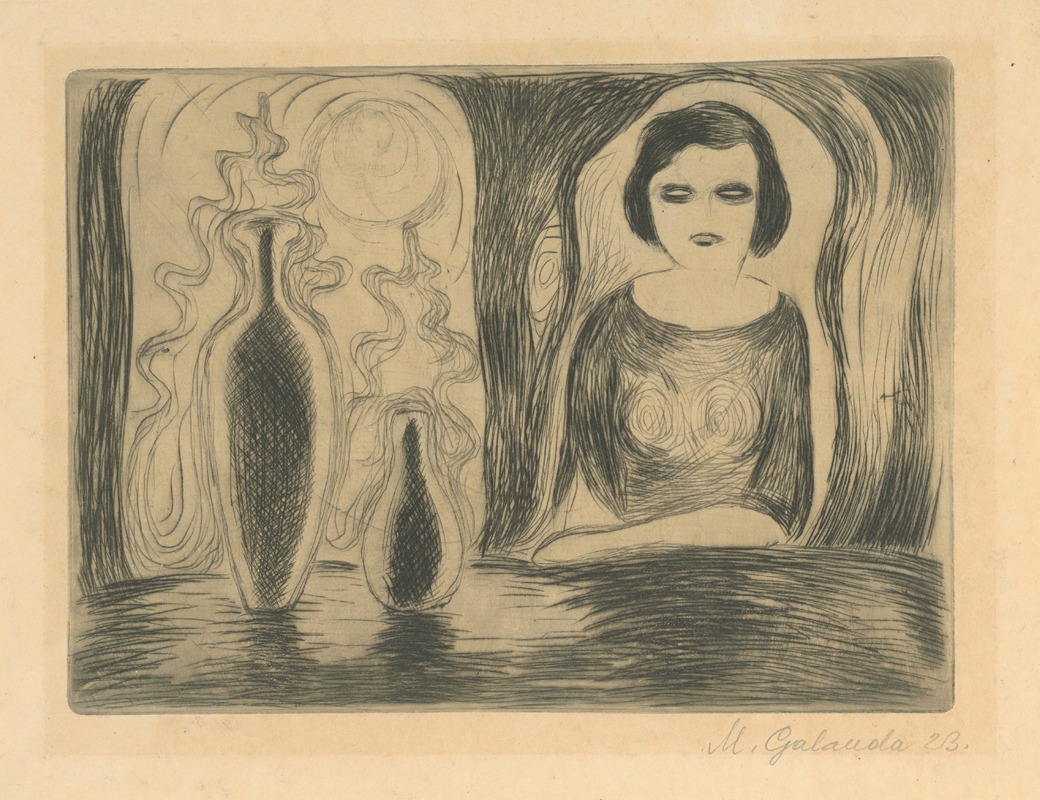
Žena pri stole
A hand-painted replica of Mikuláš Galanda’s masterpiece Žena pri stole, meticulously crafted by professional artists to capture the true essence of the original. Each piece is created with museum-quality canvas and rare mineral pigments, carefully painted by experienced artists with delicate brushstrokes and rich, layered colors to perfectly recreate the texture of the original artwork. Unlike machine-printed reproductions, this hand-painted version brings the painting to life, infused with the artist’s emotions and skill in every stroke. Whether for personal collection or home decoration, it instantly elevates the artistic atmosphere of any space.
Mikuláš Galanda was a prominent Slovak painter, illustrator, and graphic artist, known for his significant contributions to modern Slovak art in the early 20th century. One of his notable works is "Žena pri stole" (translated as "Woman at the Table"), which exemplifies his unique style and artistic vision.
Mikuláš Galanda was born on March 4, 1895, in Turčianske Teplice, then part of the Austro-Hungarian Empire. He studied at the Academy of Fine Arts in Budapest and later at the Academy of Fine Arts in Prague, where he was influenced by various modernist movements. Galanda was a key figure in the development of Slovak modernism and was associated with the "Generation of 1909," a group of Slovak artists who sought to bring modernist ideas into Slovak art.
"Žena pri stole" is a painting that reflects Galanda's modernist approach, characterized by a synthesis of different styles, including elements of Cubism, Expressionism, and Symbolism. The painting depicts a woman seated at a table, rendered in a manner that emphasizes form and color over realistic representation. This approach is typical of Galanda's work, where he often focused on the emotional and symbolic aspects of his subjects rather than their literal appearance.
The composition of "Žena pri stole" is notable for its use of geometric shapes and bold colors, which create a sense of harmony and balance. Galanda's use of color is particularly striking, as he employs a palette that is both vibrant and subdued, creating a contrast that draws the viewer's attention to the central figure. The woman's pose and expression suggest a sense of introspection or contemplation, a theme that is common in Galanda's portraits.
Galanda's work, including "Žena pri stole," played a crucial role in the development of Slovak art during a period of significant cultural and political change. His paintings often reflect the social and cultural dynamics of his time, capturing the essence of Slovak identity and the broader European avant-garde movement. Galanda was not only a painter but also an illustrator and graphic designer, contributing to various publications and artistic projects that promoted modernist ideas in Slovakia.
Throughout his career, Galanda faced challenges, including political and economic difficulties, but he remained committed to his artistic vision. His work was recognized for its innovation and influence, and he became an important figure in Slovak art history. Unfortunately, Galanda's life was cut short when he died on June 5, 1938, but his legacy continues to inspire artists and art enthusiasts.
"Žena pri stole" is a testament to Galanda's skill and creativity, showcasing his ability to blend different artistic influences into a cohesive and compelling work. It remains an important piece in the study of Slovak modernism and is appreciated for its contribution to the broader narrative of European art in the early 20th century.





